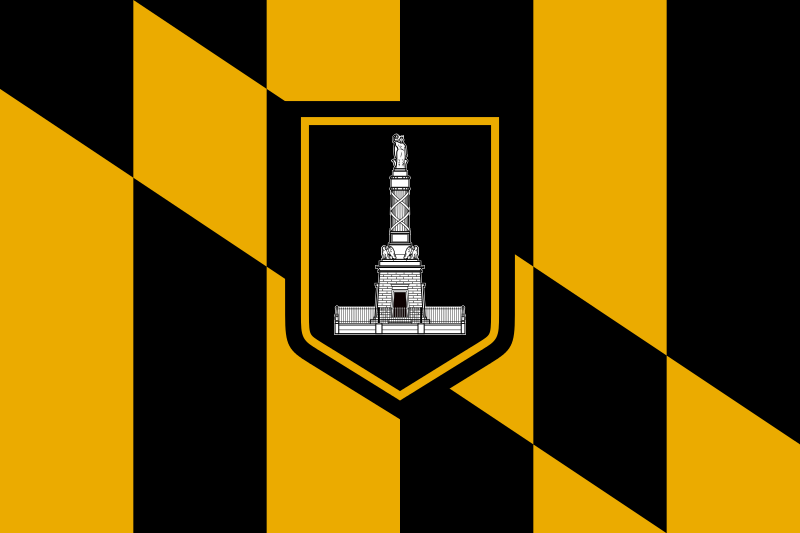American News
Ex detectives testify about force’s robberies, extortions

Flag of Baltimore (Photo by Dysfunctional, Public Domain)
BALTIMORE — Two former Baltimore detectives testified Monday about a series of brazen robberies and other illegal activities by a rogue police unit as the second week of a high-profile racketeering trial got underway.
Indicted ex-detectives Jemell Rayam and Evodio Hendrix, who each face a maximum penalty of 20 years in prison, took the stand in U.S. District Court in Baltimore clad in jail jumpsuits. They are among six indicted city detectives who have pleaded guilty and among four who are co-operating with the government during the trial.
Rayam testified about a July 2016 robbery of a married couple who were handcuffed after leaving Home Depot and taken to a police substation nicknamed “The Barn,” even though there was no evidence they had committed any crime. The indictment alleges that Gun Trace Task Force supervisor Sgt. Wayne Jenkins posed as a federal official during their interrogation.
After Ronald Hamilton disclosed he had about $40,000 in cash at the couple’s house outside the city, Gun Trace Task Force detectives drove the handcuffed couple to their Carroll County property, called a relative to pick up their children, and then scoured the house looking for cash.
They robbed $20,000 before calling other law enforcement agencies to the couple’s home, Rayam testified, saying he “took the cash and put it in the (police) vehicle we were driving.”
He testified the detectives divvied up the money and went celebrating that night at two casinos.
Earlier in the day, Hendrix testified about a $100,000 robbery from a safe following a home invasion that prosecutors say involved Detective Marcus Taylor. He said Taylor held the camera during the subsequent staging of police body-camera video to make it seem like legitimate police business.
Hendrix testified that Taylor used his $20,000 share from that illegal payday to build a deck at his town house.
Hersl and Taylor have pleaded not guilty to charges of racketeering and robbery.
Echoing the opening testimony of another indicted detective last week, Hendrix described squad supervisor Jenkins as a highly energetic dirty cop, always on the lookout for “monsters” — a term they used for drug dealers with a lot of loot to rob. Jenkins kept two duffel bags at the ready with gear including black ski masks, a grappling hook, a sledgehammer, and a machete, according to Hendrix.
“Jenkins said he had all that stuff in the car in case he ran into a monster, someone with a lot of money and drugs,” he testified.
Under cross-examination, Hendrix agreed that Jenkins was perceived as an untouchable “golden boy” within the department because the Gun Trace Task Force did manage to seize illegal guns.
According to Hendrix, Jenkins told his squad members that then-Commissioner Kevin Davis knew that he was giving them overtime whenever an illegal gun was seized. The members are accused of defrauding their department for years with bogus overtime claims, including while they were on vacation with their families.
Todd Edwards, an agent with the Drug Enforcement Administration in Baltimore, testified that during a 2016 stakeout Jenkins got out of a vehicle with tinted windows and knocked on Edwards’ car window at a parking lot in southern Maryland. They were both watching the same target. Edwards said Jenkins told him he was “looking for a monster” and had followed the suspect from Baltimore.
“I found it unusual,” Edwards said, adding that he’d never before seen a Baltimore police officer conducting investigations down in Maryland’s Prince George’s County.
The ongoing trial is one of the largest scandals in the city police force’s history. It comes as a monitoring team is overseeing court-ordered reforms as part of a federal consent decree reached last January between Baltimore and the U.S. Justice Department due to discriminatory and unconstitutional policing.
Dozens of cases handled by unit members have been dropped by prosecutors since detectives were indicted in March. Davis, who was recently fired as commissioner, disbanded the Gun Trace Task Force last year, describing the indicted officers as “1930s-style gangsters.”





















